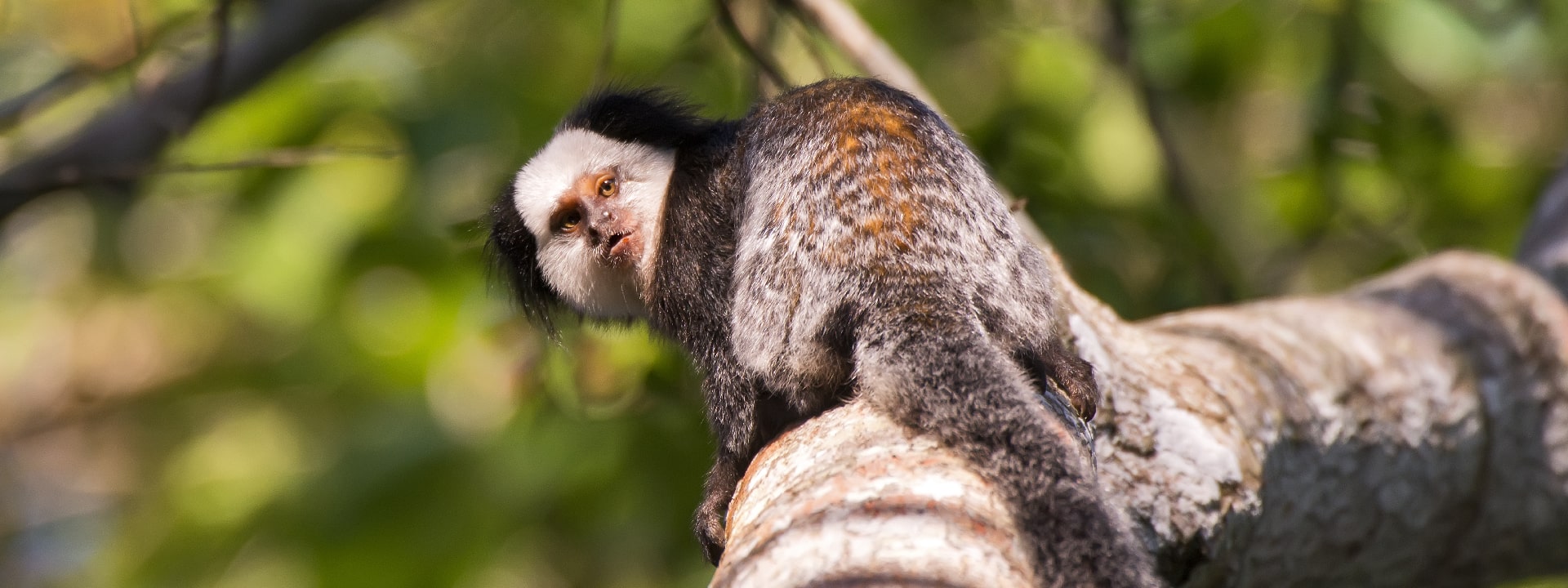The white-headed marmoset is distinguished from other New World monkey species by their small size, for having claws instead of nails and for giving birth to twins.

White-headed marmoset
Callithrix geoffroyi
Species
C. geoffroyi
Order
Primates
Family
Callitrichidae
Danger of Extinction
Bajo riesgo (Preocupación menor)

Features
These small primates originated in Brazil, they are about 20 cm long and they have a ringed tail that is 29 cm. The females weigh about 200 g, while the males are bigger, weighing between 250-350 g. They are distinguished by their white faces and fronts, black tufts of fur on their ears and striped markings on their backs.
When it comes to reproduction, only the dominant pair of the group will breed. The gestation period lasts about 140-148 days. The females commonly give birth to twins, although they can have just one or even triplets. The mother carries her offspring to feed them and they are breast-fed for about 5-6 months. The other members of the group help carry around the offspring and groom them.
Customs, food and habitat:
It is a diurnal and mainly arboreal species. They live in groups of up to 15 members in which there is a dominant pair.
They use different types of vocalizations to communicate, facial expressions, scent marking and grooming.
They live in lowland forests, dry woodland and scrubland. They spend part of the day foraging for food (24-30% of the day), and they have morphological adaptations for their environment to rip the bark off the trees to extract sap and gum, which they consume. They can be described as being insectivorous and frugivorous: they eat fruit, flowers, nectar, plant exudates, but also small animal prey such as insects, spiders, frogs, lizards and eggs.
Curiosities
In each mating season, only one dominant female will breed. Her dominant behaviour can suppress the ovulation of the other females in the group. This process might be favoured by the pheromones produced in the scent glands of the dominant breeding female. As a result, the subordinate females can’t reproduce for as long as they remain in the group.

